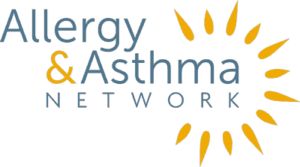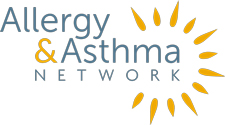
April 4, 2024
ARS Pharmaceuticals has announced it has completed a clinical study for its new epinephrine nasal spray neffy® – moving the medication one step closer to U.S. Food and Drug Administration (FDA) approval.
ARS also responded to the FDA’s Complete Response Letter in September 2023 that delayed approval for neffy, a needle-free option for epinephrine. FDA had requested that ARS conduct additional studies before approving neffy as a treatment for severe allergic reactions.
ARS conducted a study to compare two doses of an epinephrine auto-injector and two doses of neffy under normal conditions and after a nasal allergen challenge. ARS says the study results show the effectiveness and safety of the epinephrine nasal spray is greater than or similar to the auto-injector. Repeat dosing in the same nostril was greater in exposure than dosing once in each nostril and greater than an injection.
ARS also informed FDA it completed testing for nitrosamines, or chemical contaminants. The testing found no measurable levels of nitrosamines. The research was announced in February 2024 at the American Academy of Allergy, Asthma & Immunology (AAAAI) Annual Meeting in Washington, DC.
FDA is expected to undertake another review of neffy in the next six months. This could position neffy for FDA approval in the second half of 2024.
After FDA announced last year it was delaying approval of neffy, Allergy & Asthma Network issued the following statement:
Allergy & Asthma Network is very disappointed that the U.S. Food and Drug Administration (FDA) has delayed approval of a new epinephrine nasal spray, the product developed by ARS Pharmaceuticals. The epinephrine nasal spray, branded as neffy®, would be a new treatment option for people with severe or life-threatening allergies who prefer a needle-free way to treat anaphylaxis. Unfortunately, FDA’s decision could delay this product from reaching the public for at least a year, if not longer. ARS Pharma is now required to conduct additional research into the product, even though the FDA’s Pulmonary-Allergy Drugs Advisory Committee already voted 16-6 in favor of its use in adults and 17-5 in favor of its use in children.
As a patient advocacy organization, Allergy & Asthma Network will seek to better understand the reasons for the agency’s decision to delay approval. While epinephrine auto-injectors remain a reliable treatment for many people with severe or life-threatening allergies, we have heard from many patients and families who feel hesitant about injecting themselves with needle-based epinephrine. Seconds count when someone is experiencing anaphylaxis and any delay in treatment could have life-threatening consequences. A needle-free epinephrine option will address an unmet need – and it’s needed sooner rather than later.
Allergy & Asthma Network will continue to advocate for an epinephrine nasal spray treatment with FDA and keep our community informed about this important issue. We support ARS Pharma’s commitment to bring this new treatment option to millions who will benefit from it.
More Epinephrine Treatments On the Horizon
neffy is not the only epinephrine nasal spray in development.
Bryn Pharma is also developing an epinephrine nasal spray currently referred to as NDS1C. The company reported positive results of clinical trials for NDS1C at the AAAAI annual meeting in Washington, DC in February 2024.
Bryn Pharma’s studies suggest NDS1C is as effective as an auto-injector. The studies found the epinephrine nasal spray reached similar levels of epinephrine absorption in the body as the auto-injector. Researchers reported the nasal spray was safe and well tolerated, and side effects were mild.
In addition to an epinephrine nasal spray, an under-the-tongue (sublingual) strip containing epinephrine is in clinical trials. The strip, called Anaphylm™, is manufactured by Aquestive Therapeutics. Aquestive recently announced positive results from clinical trials showing Anaphylm provides rapid and sustained levels of epinephrine similar to auto-injectors.
The strip is similar in size to a postage stamp. It dissolves under the tongue on contact. It can be carried safely in your pocket.
For now, the first line of treatment for anaphylaxis remains using an epinephrine auto-injector. These needle-based devices were first approved by FDA in 1987. Since then, epinephrine auto-injectors have become the standard treatment for anaphylaxis.
It’s clear that patients and families want an efficient epinephrine delivery device that does not involve needles. In 2018, Allergy & Asthma Network recruited patients and caregivers for a study sponsored by StellaPharma (now StellaPharm). The study examined preferences for nasal spray epinephrine. Researchers surveyed 372 patients and caregivers overall.
Their findings:
- 91% of study participants would consider using an epinephrine nasal spray instead of an auto-injector;
- nearly 72% would prefer using an epinephrine nasal spray instead of an auto-injector;
- 82% would prefer needle-free epinephrine instead of an injection;
- 80% would be more likely to carry a smaller and easier to conceal epinephrine product.
- 43% disliked the idea of injecting a needle to administer epinephrine.
An epinephrine nasal spray would offer a new treatment option for people who prefer a needle-free way to treat anaphylaxis.
Epinephrine nasal sprays are expected to be easier to carry and use than auto-injectors. Many people with anaphylaxis and caregivers tend to hesitate when using auto-injectors, in part because of worries about injecting a needle. Studies show any hesitation or delay in administering epinephrine puts patients at risk for worse outcomes, and even death.
“Additional safe and effective treatment options like neffy will offer patients new choices that are currently not available,” says Allergy & Asthma Network Director of Advocacy Charmayne Anderson. “We want to see more safe and effective epinephrine options for people at risk for anaphylaxis so they will be able to get the treatment they need when they need it.”
Anderson was among patient advocates who offered testimony in support of new epinephrine delivery options at an FDA advisory panel public meeting on May 11, 2023. Read her full comments below.
Remarks from Director of Advocacy Charmayne Anderson at FDA Hearing
Pulmonary-Allergy Drugs Advisory Committee Meeting
U.S. Food and Drug Administration
Docket number is FDA-2023-N-0984
May 11, 2023
Allergy & Asthma Network, the leading national nonprofit dedicated to improving the health of people with allergies, asthma and related conditions, is pleased to provide comments on neffy®, the new epinephrine nasal spray under review by the U.S. Food and Drug Administration (FDA). We are encouraged by this new treatment option, as epinephrine is the primary therapy to treating anaphylaxis, a life-threatening allergic reaction.
Approximately 32 million Americans, including 6 million children, live with food allergies. Up to 50 million people in the United States have experienced anaphylaxis to food, insect venom, medication and latex.
Anaphylaxis is estimated to cause 500 to 1,000 deaths annually. Epinephrine is the first-line treatment when a person is experiencing a life-threatening allergic reaction.
Prevalence and burden of severe allergies is growing for millions of Americans. Anaphylaxis is a distressing and potentially fatal event. Avoidance alone is simply not enough. One systematic review showed 12.28 cases of accidental peanut exposure per 100 person-years of children/adults with peanut allergy. They live in constant fear of an accidental exposure, impacting their quality of life. These are not nameless, faceless statistics. These are real people with families, hopes, dreams and fears.
A tragic example of this is the death of 3-year-old Elijah-Alavi Silvera. His father Thomas, from New York City, suffered every parent’s nightmare in 2017 when Elijah died from a severe allergic reaction while at preschool. Even though Thomas and his wife took great strides in making sure his childcare providers were aware of Elijah’s food allergy and prepared to administer epinephrine, an accidental exposure occurred and there was a delay in using Elijah’s auto-injector. Within minutes, Thomas’s world was turned upside down. His family will never be the same.
Access to epinephrine is critical, yet innovation has been lacking. The first epinephrine auto-injector came on the market in 1987. Vial and syringe or auto-injectors are still the only option for treating anaphylaxis.
Data further shows that death from anaphylaxis occurs more often when there is either a delay in administering epinephrine or it is not given at all. Studies have shown that auto-injectors are often not carried or not used promptly. The causes of the delay vary, from needle phobia to hesitation using the auto-injector to reluctance to carry due to the size of the auto-injector devices.
Allergy & Asthma Network advocates for innovative therapies to address specific medical needs and improve patients’ lives. We believe individuals and caregivers should have access to safe and effective epinephrine products that encourage individuals to carry it with them and not hesitate to use it promptly in an allergic emergency.
We are optimistic about the continued advancements in scientific research and development of treatments for anaphylaxis, which include needle-free nasal sprays like neffy® and sublingual (under the tongue) administration that give people additional treatment options. These are smaller-size alternatives for those who are reluctant to use or carry an auto-injector.
The need and patient preference for new anaphylaxis treatment options are further underscored in the Voice of the Patient Report that followed the 2021 externally-led Patient-Focused Drug Development Meeting (PFDD). This meeting was organized by the Food Allergy Collaborative, a coalition of eight food allergy organizations, people living with food allergies, industry partners and FDA. The Report highlights patients and caregivers who want less-invasive options in epinephrine treatment.
People with severe allergies are relying on the FDA to ensure innovative products that are safe and effective to reach the community they can help the most. Innovation without access only breeds frustration. Quality of life considerations and patient preferences should play a key role in driving treatment decisions for people, especially those with food allergy.
Additional safe and effective treatment options like neffy® will offer patients new choices that are currently not available. We want to see more safe and effective epinephrine options for people at risk for anaphylaxis so they will be able to get the treatment they need when they need it.
Thank you for your consideration of our comments and the integral role you serve today to end the needless death and suffering due to severe, life-threatening allergies.
Reviewed by:
Purvi Parikh, MD, FACAAI is an adult and pediatric allergist and immunologist at Allergy and Asthma Associates of Murray Hill in New York City. She is on faculty as Clinical Assistant Professor in both departments of Medicine and Pediatrics at New York University School of Medicine.

 810304 Eaton Place, Suite 100
810304 Eaton Place, Suite 100